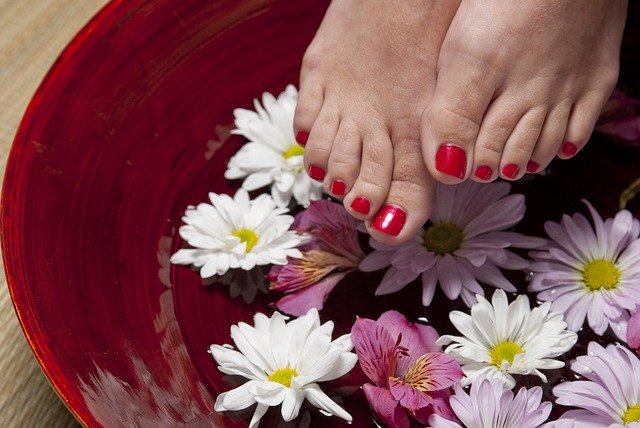Pedicures are best when performed at a reputed nail salon, but you should make sure that your diabetes is under control. So, you may often wonder, can diabetics get pedicures? Let us answer this for you!
After you have decided on performing a pedicure at home, ensure that your blood sugar levels are normal, have a hygienic setup, and avoid nicks and cuts.
Dangers Associated With Getting A Pedicure With Diabetes
The condition of diabetes is a chronic one often associated with complications of the nervous, circulatory, and heart systems.
There are several risks of getting your pedicure done whenever you have diabetes, as it may lead to infections due to different factors, such as:
- Poor Circulation
People who do not have diabetes under control have reduced flow of blood and bad circulation, as they are prone to a greater risk of infections.
If the salon’s professional exfoliates are rough or create nicks in your cuticles, you may risk developing a wound that slowly heals and becomes a danger for you.
- Fewer Pain Sensations
Since diabetes can also damage nerves (diabetic neuropathy), persons with diabetes may experience less pain, allowing them to miss cuts or nicks.
- Enlarged Nails
Ingrown toenails can result from pedicures if the nails are trimmed too short.
An ingrown toenail with bare areas can cause foot infections in people with diabetes who have diabetic neuropathy or poorly managed blood sugar levels.
- Unhygienic Surroundings
Additionally, difficult-to-treat fungi can grow under your nails in an unsterile environment. So, How do you give a diabetic a pedicure?
If You Have Diabetes, What Are The Dangers Of Having A Pedicure?
Whenever you have diabetes, there are a few risks associated with getting a pedicure that, includes:
- Infections
- The slow process of healing a wound
- Ulcers
- Gangrene that leads to leg or foot amputations
Diabetics are highly prone to infections, mainly whenever there is an abrasion or a cut.

The infections lead to increased levels of blood sugar that disrupt the process of wound healing, causing the formation of ulcers. In the rarest cases, it leads to amputation and gangrene.
So, why do diabetics need pedicures?
Precautions For Diabetics To Have A Pedicure
Whenever you are deciding on getting a pedicure at a nail salon, ensure that there are the following:
- The sound reputation of the salon
- Better sanitized interiors
- Use of sterile equipment
- Skilled technicians
There are even some other precautions that are considered, such as:
- If Necessary, Avoid The Salon
Avoid getting a pedicure if you have cuts or open sores on your legs or feet.
Additionally, if you have neuropathy, a kind of diabetes-related nerve loss, you should refrain from getting a pedicure.
See a podiatrist or other expert for advice on how to take care of your feet.
- Do Not Shave Your Legs Before Getting A Pedicure
You will likely have minor scrapes and nicks that might become infected if you shave the day before getting your feet painted.
People who have diabetic neuropathy may not be able to feel such cuts and are more prone to getting an infection that can result in sores and ulcers.
- Discuss with your technician. Inform the staff member at the spa or salon about your diabetes so they can take the appropriate safety measures.
- The technician should gently exfoliate the dead skin off your heels using a pumice stone rather than a metal scraper.
- Scrub calluses gently rather than chopping them off or applying a liquid callus remover.
- Avoid trimming your nails too short, which might promote ingrown toenails and infection.
- Since you might not be able to feel the water’s temperature with your feet, have someone else test the water’s temperature for you.
Closing Thoughts
While knowing if diabetics can get pedicures, ensure that after getting the pedicure job done, keep a watch on your toenails and feet.
Consult your podiatrist immediately if you notice any infections, pain, discoloration, or redness.